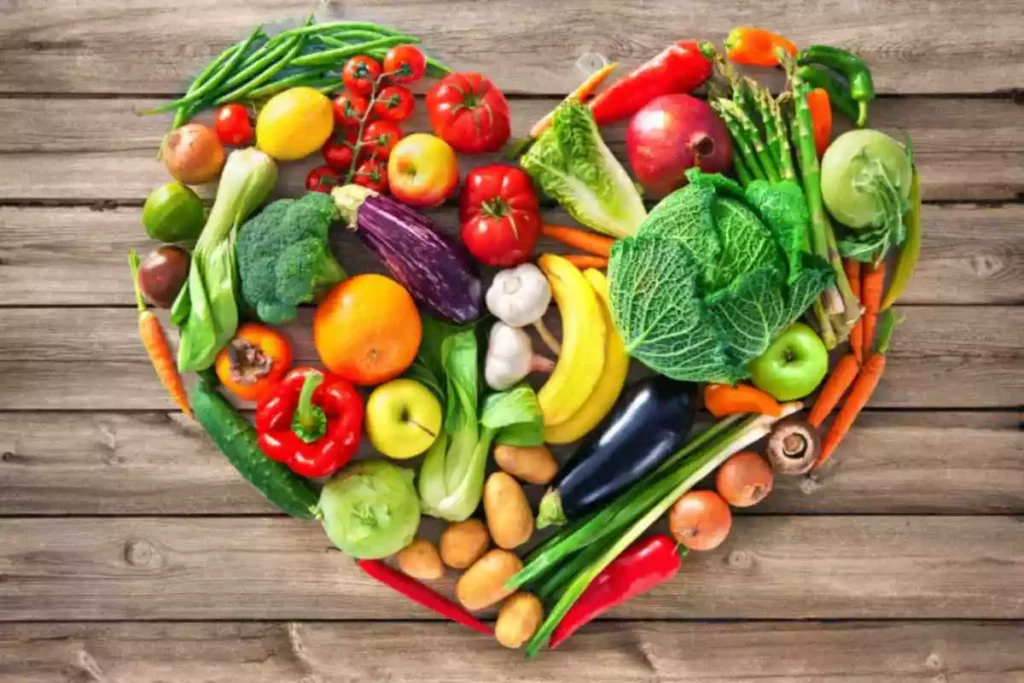Indian Diet food
Table of Contents
For billions of cells in the human body, a variety of foods and nutrients are needed. Weight loss is difficult and takes perseverance, effort, and patience. It can be attained by a healthy lifestyle that requires a balanced diet and daily physical activity.
The majority of people have a misunderstanding about it. Most people believe that losing weight requires extreme diets like intermittent fasting, the 10-week diet, or the keto diet, or nutritional supplements like medicines or tablets. This, however, is incorrect.
One needs nutritious food in the right proportions including all food groups. More often than not, the diet that a person is accustomed to eating from birth is the best diet for weight loss instead of trying different foods.
Indian diet food chart for 7 days weight loss is very effective because Indian foods are balanced as they include protein, fat, carbohydrates, and fiber in the required amount. There are other nutritious foods such as sorghum, lentils, healthy fats, vegetables, milk, and fruit. With so many ways to cook Indian food, healthy options are always available. Also, many Indian spices and herbs are extremely healthy, such as pepper, turmeric, garlic, cinnamon, cardamom, ginger, & basil.
Some other nutritious foods you should eat while trying to lose weight are locally available fruits and vegetables like tomatoes, spinach, okra, bhindi, cabbage, parwal, mushrooms, papaya, pomegranate, guava, banana, apples, etc. are the best source of minerals & vitamins. Seasonal legumes like green and yellow mung beans, kidney (rajma) beans, lentils, pulses, black lentils, chickpeas are an important part of Indian food. Protein sources like curd, ghee, buttermilk & cheese should be consumed regularly. Other food items like meat, tofu, paneer, legumes, milk, nuts & seeds are also essential.
The following suggestions may be helpful when following an Indian diet food map for weight loss.
- Freshly prepared meals are often the best option.
- Make sure your diet includes all of the food classes.
- Breakfasts should be filling and nutritious. Paratha, idlis, dosa, uttapam, toast, and eggs are all good options.
- Within thirty minutes of waking up, you can eat breakfast.
- Lunch should consist of dal, sabzi, roti, and curd or rice, rajma, chole, and so on.
- Dinner should consist of something light like khichdi, dal chawal, or curd rice.
- Dinner should be consumed at least two hours before going to bed.
- There should be 2-3 mini-meals in addition to the main meals.
- Fruits, nuts, salads, peanuts, and other snacks can be used to make these mini-meals.
- Avoid packaged foods, processed foods, and ready-to-eat foods.
- Water is an essential component of a well-balanced diet.
- One cheat meal per week is permissible; however, do not overindulge during this period.
- To lose weight, stay away from low-carb diets and starvation.
Below is a sample Indian diet food chart that you can follow if you want to maintain a healthy weight or lose weight. However, make sure to consult your doctor regarding what you can and cannot consume depending on your health issues.
MONDAY
Breakfast: Idli/dosa/ vegetable sandwich with fruit like apple.
Lunch: Two whole-grain roti served with a vegetable curry with one dal, salad & a serving of chicken/fish curry for non-veg eaters.
Dinner: Paneer/Mushroom/chicken curry with 2 plain rotis & lentils.
TUESDAY
Breakfast: Quinoa parathas with mixed vegetables and a glass of milk/ Fruit porridge with healthy seeds like chia & flax.
Lunch: Quinoa with chickpea curry, dal & curd.
Dinner: one cup plain khichdi with vegetable curry/one cup brown rice with fish curry.
WEDNESDAY
Breakfast: Fruit porridge with curd, healthy seeds like flax and chia/ rava uttapam with simple coconut chutney.
Lunch: Vegetable parathas with vegetable curry, mixed salad, curd & a boiled egg/fish curry.
Dinner: One cup brown rice with vegetables & lentils/ 2 plain tawa rotis with chicken/ vegetable curry and dal.
THURSDAY
Breakfast: Vegetable poha/upma, curd & a fruit.
Lunch: Two wheat rotis served with a vegetable sabzi & dal and chicken/fish curry, salad.
Dinner: Chicken/vegetable chickpea salad.
FRIDAY
Breakfast: Vegetable paratha with curd/pickle, a fruit.
Lunch: Dalia with chicken/fish/vegetable curry, salad, curd.
Dinner: Rajma and one cup brown rice.
SATURDAY
Breakfast: Aloo parathas with mixed vegetables.
Lunch: Quinoa and rajma salad, curd, egg/chicken/lentil stew.
Dinner: 2 rotis with vegetable curry, green salad.
SUNDAY
Breakfast: Spinach paratha, vegetable curry, a glass of milk
Lunch: Brown rice with dal tadka, curd & salad.
Dinner: 2 multigrain rotis with palak paneer.
Conclusion
Embarking on a weight loss journey doesn’t mean sacrificing flavor and variety. With our 7-day Indian diet food chart, you can achieve effective weight loss while relishing the rich cultural heritage and vibrant flavors of Indian cuisine. Follow this meticulously crafted plan and experience the transformation of your body and your palate. Say goodbye to tedious diets and welcome a fulfilling and sustainable approach to weight loss with the best 7-day Indian diet food chart.
Related Articles
Indian Food – A Comprehensive guide
Indian Cuisine – An Aromatic Speciality
Indian Restaurants – Where and What To Eat
6 Exhilarating Tasty Indian Food Dishes that Tantalizes your Taste Buds
The Best Plant-Based Indian Diet for Weight Loss – 1 Week Sample Meal Plan
The Delicious South Indian Cuisine – 5 Eccentric Dishes You Must Try
5 Most Popular Indian Cooking Techniques
Indian Sweets – 5 Unique and Delicious Treats
8 Best Crispy & Crunchy Indian Snacks to Satiate your Hunger

